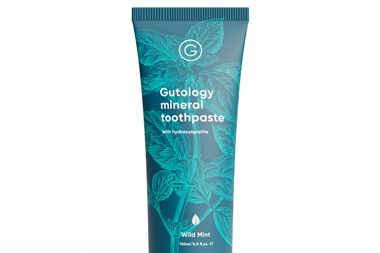The FSA has infuriated bread and cereal manufacturers with the aggressive tone of its latest salt-reduction campaign. Has it gone too far, asks Nick Hughes
"Rubbing salt in our wounds.” That’s how one source describes the FSA’s latest poster campaign, which depicts salt spilling out of cereals, bread, ketchup and pasta sauce.
The industry has known since June that the FSA was going to target certain categories in its latest public awareness campaign to illustrate how salt lurks in everyday foods. But the manner of its execution has caused consternation among elements of the food industry who believe certain sectors have been disproportionately targeted by the campaign.
Last week the Food & Drink Federation, the Federation of Bakers and the Association of Cereal Foods Manufacturers withdrew their support for the campaign on the grounds that the latest wave of ads fails to acknowledge industry salt reduction efforts.
“The tone of the campaign didn’t acknowledge the work that’s already been done and that was our disappointment, because it seems whatever you’ve done it doesn’t get recognised,” says Gordon Polson, director of the Federation of Bakers.
The FSA says the loss of support is “disappointing”, but points out that the remainder of the food industry, including the National Association of Master Bakers, Mars, Unilever and Heinz, remain supportive of the campaign.
Since the FSA launched its salt reduction programme in 2004, average salt intake has fallen from 9.6g a day to 8.6g a day but still falls well short of the 6g recommended by the FSA. Maybe this explains the aggressive intent of the latest campaign. The FSA says bread and cereals have been singled out because they are the top contributing foods to salt intake based on quantity consumed.
What it doesn’t account for, say manufacturers, is the progress these categories have made in taking salt out of foods. The vast majority of bakers have either already hit or are close to hitting 2010 targets for salt reduction, says Polson.
Kellogg’s communications director Chris Wermann also takes issue with the FSA’s use of a National Diet and Nutrition Survey from 2000 to determine adult consumption of salt. As well as reducing salt levels by 40% since 1999, according to Wermann, TNS data from September 2008, which Kellogg’s says it has shared with the agency, shows cereals accounting for just 2.7% of annual salt purchased in shopping baskets.
Rosemary Hignett, FSA head of nutrition, defends its position, claiming that “although the amount cereals contribute may seem low, they are still one of the top salt-contributing foods”.
Yet it’s the lack of proportionality that has provoked the most indignation among manufacturers. “As far as I understand, if all categories had taken as much salt out as cereals then the 6g target would probably have been reached,” says a frustrated Wermann.
The FSA has fuelled further anger by suggesting consumers could substitute branded products for own-label variants that, according to an FSA press release, “are often lower in salt than branded versions”. “Take own-label bread,” says one industry source. “There’s a reason it has less salt, because it doesn’t look as nice, it tastes different, has a much shorter shelf life and it’s not as good a product.”
Wermann adds that encouraging consumers to choose own-label over brands because of salt content is a narrow-minded approach and adds another layer of confusion to healthy eating messages.
“It should be a much more focused campaign to look at the label on front of pack – which not just looks at salt but also saturated fat and sugar and energy – plus good vitamins and minerals. A single-minded look at salt may drive people down the wrong route.”
Hignett counters that there’s a wide range of salt levels in some categories and many products on the market contain salt levels well below 2010 targets. “Since we have committed to reduce salt intakes to 6g, we felt it important to make people aware of this, to encourage them to check the labels when out shopping, to find the products lowest in salt,” she says.
Nevertheless, the overt way in which the FSA has advocated own-label products has led to some questioning whether it has strayed beyond the boundaries of how an independent agency should act.
“We’re not afraid of people looking at the label and understanding it,” says Polson. “But I don’t think it’s necessarily for the FSA to be suggesting you should be buying one particular product over another.”
"Rubbing salt in our wounds.” That’s how one source describes the FSA’s latest poster campaign, which depicts salt spilling out of cereals, bread, ketchup and pasta sauce.
The industry has known since June that the FSA was going to target certain categories in its latest public awareness campaign to illustrate how salt lurks in everyday foods. But the manner of its execution has caused consternation among elements of the food industry who believe certain sectors have been disproportionately targeted by the campaign.
Last week the Food & Drink Federation, the Federation of Bakers and the Association of Cereal Foods Manufacturers withdrew their support for the campaign on the grounds that the latest wave of ads fails to acknowledge industry salt reduction efforts.
“The tone of the campaign didn’t acknowledge the work that’s already been done and that was our disappointment, because it seems whatever you’ve done it doesn’t get recognised,” says Gordon Polson, director of the Federation of Bakers.
The FSA says the loss of support is “disappointing”, but points out that the remainder of the food industry, including the National Association of Master Bakers, Mars, Unilever and Heinz, remain supportive of the campaign.
Since the FSA launched its salt reduction programme in 2004, average salt intake has fallen from 9.6g a day to 8.6g a day but still falls well short of the 6g recommended by the FSA. Maybe this explains the aggressive intent of the latest campaign. The FSA says bread and cereals have been singled out because they are the top contributing foods to salt intake based on quantity consumed.
What it doesn’t account for, say manufacturers, is the progress these categories have made in taking salt out of foods. The vast majority of bakers have either already hit or are close to hitting 2010 targets for salt reduction, says Polson.
Kellogg’s communications director Chris Wermann also takes issue with the FSA’s use of a National Diet and Nutrition Survey from 2000 to determine adult consumption of salt. As well as reducing salt levels by 40% since 1999, according to Wermann, TNS data from September 2008, which Kellogg’s says it has shared with the agency, shows cereals accounting for just 2.7% of annual salt purchased in shopping baskets.
Rosemary Hignett, FSA head of nutrition, defends its position, claiming that “although the amount cereals contribute may seem low, they are still one of the top salt-contributing foods”.
Yet it’s the lack of proportionality that has provoked the most indignation among manufacturers. “As far as I understand, if all categories had taken as much salt out as cereals then the 6g target would probably have been reached,” says a frustrated Wermann.
The FSA has fuelled further anger by suggesting consumers could substitute branded products for own-label variants that, according to an FSA press release, “are often lower in salt than branded versions”. “Take own-label bread,” says one industry source. “There’s a reason it has less salt, because it doesn’t look as nice, it tastes different, has a much shorter shelf life and it’s not as good a product.”
Wermann adds that encouraging consumers to choose own-label over brands because of salt content is a narrow-minded approach and adds another layer of confusion to healthy eating messages.
“It should be a much more focused campaign to look at the label on front of pack – which not just looks at salt but also saturated fat and sugar and energy – plus good vitamins and minerals. A single-minded look at salt may drive people down the wrong route.”
Hignett counters that there’s a wide range of salt levels in some categories and many products on the market contain salt levels well below 2010 targets. “Since we have committed to reduce salt intakes to 6g, we felt it important to make people aware of this, to encourage them to check the labels when out shopping, to find the products lowest in salt,” she says.
Nevertheless, the overt way in which the FSA has advocated own-label products has led to some questioning whether it has strayed beyond the boundaries of how an independent agency should act.
“We’re not afraid of people looking at the label and understanding it,” says Polson. “But I don’t think it’s necessarily for the FSA to be suggesting you should be buying one particular product over another.”


















No comments yet